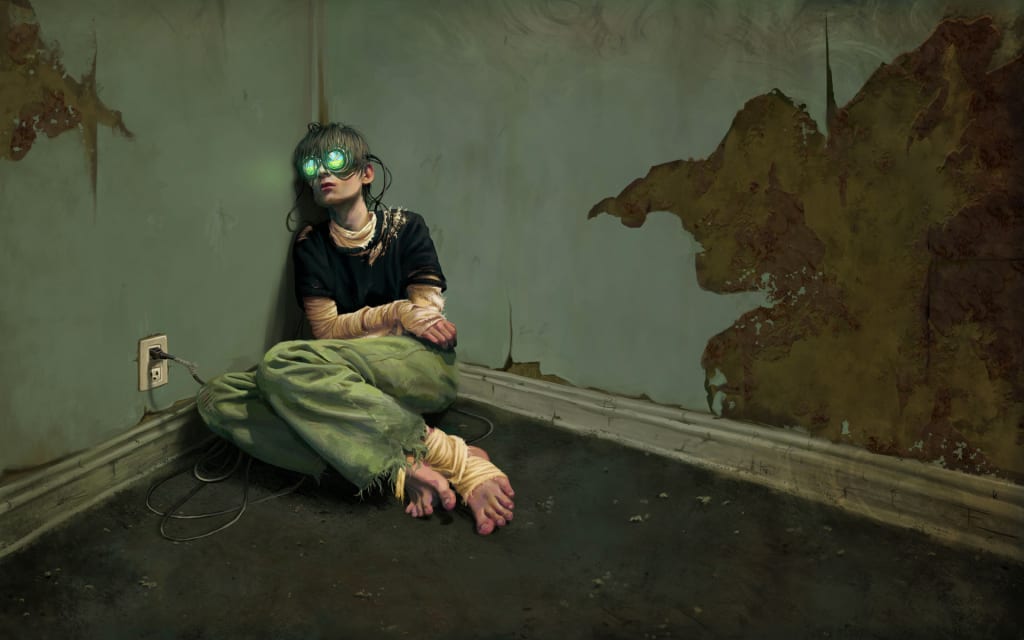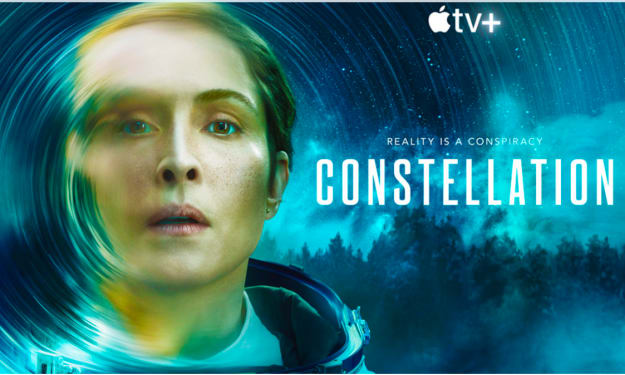Must Read Cyberpunk Books
Cyberpunk book readers navigate sprawling neon cities populated by hackers, gangsters, outcasts, and femmes fatales.

Cyberpunk books are a distinctive cross-section of sci-fi narratives typically taking place in dystopian, near future settings, and featuring high-tech post-industrial societies, contrasted against a gritty, seedy underbelly akin to hardboiled detective fiction. The reader navigates sprawling neon cities populated by hackers, gangsters, outcasts, and femmes fatales. The protagonist, usually an anti-hero, often struggles against an evil, above-the-law megacorporation. Another hallmark of cyberpunk books is that often hackers possess the ability to literally enter an online world, or "cyberspace," by connecting their brains to advanced computers.
The newest entry in this list, Suarez’s bestseller tells the story of a persistent virus, the eponymous Daemon, which causes massive real world repercussions after its programmer’s death. Dying of brain cancer and scared for humanity’s future, genius computer programmer and chief technology officer of Cyberstorm Entertainment, Matthew A. Sobol, imagines a new world order. When he dies the Daemon kicks in, assassinating targets, taking control of hundreds of companies, recruiting agents and creating weaponized robots. It also builds a second Internet—the Darknet—allowing Daemon agents to operate clandestinely. The story is presented as a series of interwoven tales, featuring an ensemble cast of film noir staples such as a detective, a drug dealer, a reporter, a government agent and others.
A classic among cyberpunk books, True Names touches on themes such as transhumanism, anarchism, and technological singularity. It is the story of hackers (warlocks)—revolutionary users of a new virtual reality (the Other Plane) who can hack computers worldwide for personal gain. They must keep their true names secret, even amongst each other, for fear that the United States Government (the Great Adversary) will identify them and forcefully recruit them. This is exactly what happens to protagonist Mr. Slippery (true name—Roger Pollack). The Great Adversary coerces him into investigating the Mailman—a mysterious new warlock who has been causing them great trouble. Mr. Slippery looks into the case with fellow warlock Erythrina. Thus a deadly game of cat and mouse begins.
This underrated gem of a book takes the film noir ancestry of cyberpunk to another level. It uses the tropes of the noir genre—the marginalized and cynical anti-hero detective, the femme fatale, widespread corruption and moral decay—to critique unchecked capitalism gone bad. But here the protagonist has actually had his eyes specially altered so that he sees the world in the visual style of a black and white hardboiled gangster film. Not only have the colors been removed, but the procedure also modifies his perception of people, items and his surroundings to better fit film noir mise en scène. We follow the Dickensially named McNihil, who has been hired by megacorporation execs to investigate the death of one of their associates.
One of the earlier cyberpunk books, Brunner coined the term "worm," a computer virus that proliferates to spread to other computers, for the novel. Set in a dystopian future America ruled by computer networks, hacker hero Nick Haflinger has been on the run from megacorporation Tarnover, which indoctrinates highly gifted children to further their own agenda. Nick is able to hack the network using only a touch tone telephone. He is a classic flawed hero. For one thing, at times he exhibits death wish tendencies. Told in flashback, Nick had escaped the facility after stumbling upon a genetic engineering program which produced monstrously deformed children who are neutralized when they cease to be of use to Tarnover. The novel borrows heavily from Alvin Toffler’s Future Shock.
Winner of the 1995 Lambda Literary Award for Gay & Lesbian Science Fiction and Fantasy. Set in the near future United States of America, it depicts India Carless, who goes by the criminal hacker handle "Trouble." After a government crackdown on hacker crime, Trouble is forced to leave her hacker life behind her, settle down, and establish a small network for an artist’s co-op. However, after three years of peace, Trouble discovers that somebody is impersonating her in the cyberspace virtual world of the shadows in order to commit computer crime. Now she must team up with her ex-girlfriend Cerise on a thrilling cross-country mission to uncover the imposter. Trouble and Her Friends is one of the rare cyberpunk books exploring feminist and LGBTQ themes.
A hardboiled story set 500 years in the future, human personalities can be saved electronically, so when they die their memories can be transferred to new host bodies known as sleeves, meaning that the well-off can theoretically live forever. Murder is an even riskier act than usual, because if the victim is "resleeved," they can simply name their killer. Takeshi Kovacs, a former UN elite soldier haunted by his wartime actions, is called in by a murder victim who has just been resleeved. Since his memory is on a 48 hour delay, Kovacs must race against time to crack the case. In a coup for cyberpunk books, a 10-episode TV series adaptation was recently announced by Netflix for this Philip K. Dick Award winner.
This Hugo Award winner takes place in a future where advertising has been outlawed. To get around this, corporations manipulate consumers through celebrity-making and product placement on a pervasive scale. Seventeen-year-old Philadelphia Burke—a suicidal, deformed sufferer of pituitary dystrophy—is discovered by a corporate scout. She is given the opportunity to become a "remote" celebrity, meaning that electronic brain implants will allow her to control an artificially grown body via computer. Philadelphia becomes the remote controller of a beautiful fifteen-year-old girl named Delphi, who, after being "discovered," becomes an overnight media sensation. Her real job is to travel the world, buying and using products, cameras capturing her every purchase, to circumvent the advertising ban. The book explores the themes of gender and body identity.
An über-cool example of comic cyberpunk books, this series is collected in trade paperback form. Set in the 23rd century, Transmetropolitan tells the story of rebel gonzo journalist Spider Jerusalem, a futuristic Hunter S. Thompson type. At the beginning of the series, Jerusalem has retired from journalism and is living the life of a recluse in the mountains. Having taken the money from a previous book deal but failing to have delivered the work, Jerusalem is tracked down by his publisher who demands that he fulfill his end of the bargain. Jerusalem must reluctantly return to "The City"—a hedonistic hotbed of excessive consumerism and vice. It doesn’t take long for Jerusalem to get into trouble, running afoul of corrupt politicians and officials whom he resolves to take down.
As the source material for Ridley Scott’s Blade Runner, this Nebula Award nominee is arguably one of the most seminal examples of cyberpunk books. The novel takes place in post-apocalyptic San Francisco. Earth has been devastated by the nuclear World War Terminus to the extent that radiation has wiped out most animals. Owning a real animal is now a great status symbol and sign of empathy. Most people, including bounty hunter Rick Deckard, must make do with realistic electric animals. Deckard is tasked with "retiring" six rogue androids, a job that will pay enough money so that he will be able to afford a real animal for himself and his wife. The androids are said to be indistinguishable from humans, except that they lack empathy. Deckard is one of the few people who can tell the difference, by means of a question and answer test. The thought-provoking novel sees Deckard wrestling with himself over the ethical implications of his mission and what it means to be human.
Neuromancer was the first novel to win sci-fi’s triple crown of the Hugo, Nebula, and Philip K. Dick Awards. The influential Gibson popularized the word "megacorporation," in addition to coining the terms "cyberspace" (in the days before the Internet) and "the matrix" as the name for the virtual reality world that is able to be entered by protagonist Henry Case. Once a brilliant hacker, or "console cowboy," Case is now a washed-up, low-rent hustler eking out an existence in the dystopian Chiba City. He is suicidal, having been caught stealing from his ex-employer, who took vengeance by poisoning Case’s central nervous system, thus removing his ability to access the matrix. An enigmatic benefactor then shows up and offers to heal Case in exchange for pulling off the ultimate hack. This is the quintessential example of all cyberpunk books.
About the Creator
Stephanie Gladwell
Mother of two, educator of many. Teaches middle-school biology and chemistry. Always interested in exploring the unknown.






Comments
There are no comments for this story
Be the first to respond and start the conversation.